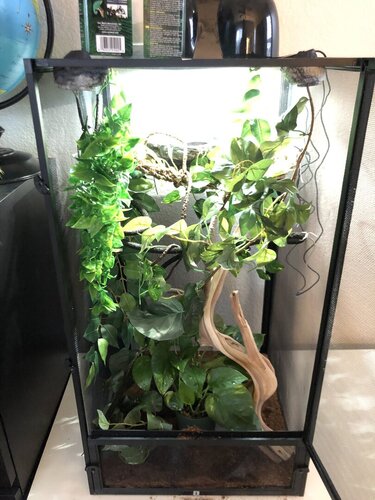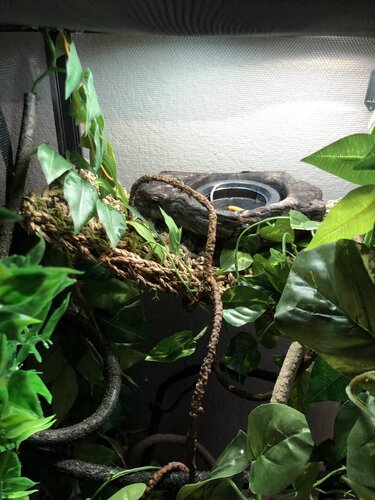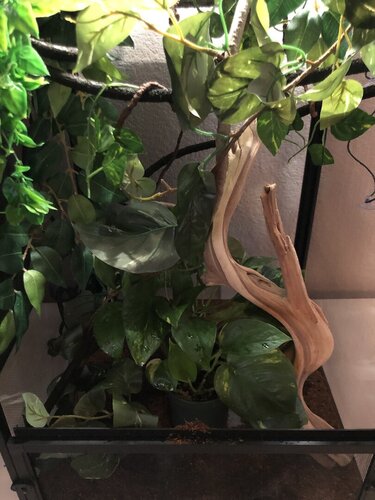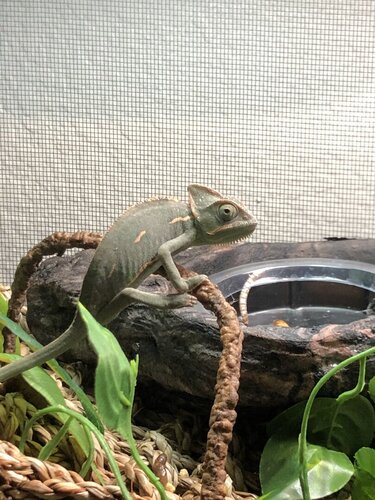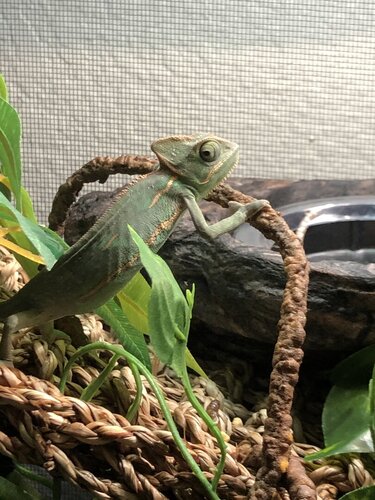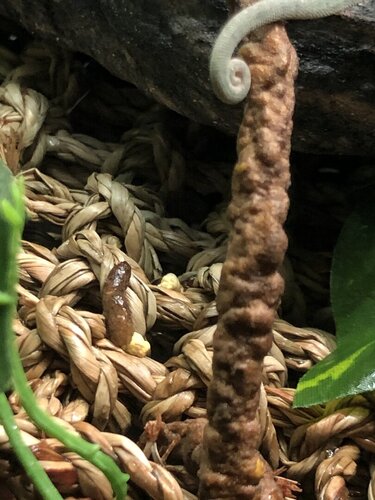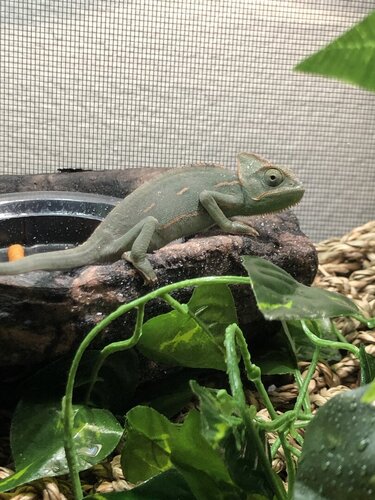Spikethecham
New Member
Hi all! My son got a chameleon for Christmas from Santa. Think we’ve finally got cage set up to where he feels safe, and we’ve got him eating regularly. The only thing I’m not sure about it water. We’ve been misting the cage 3-4 times a day, and have a dropper dropping water onto a leaf. I’ve only seen the chameleon, Spike, drink once. How do I know if he’s drinking enough? Thanks in advance!






